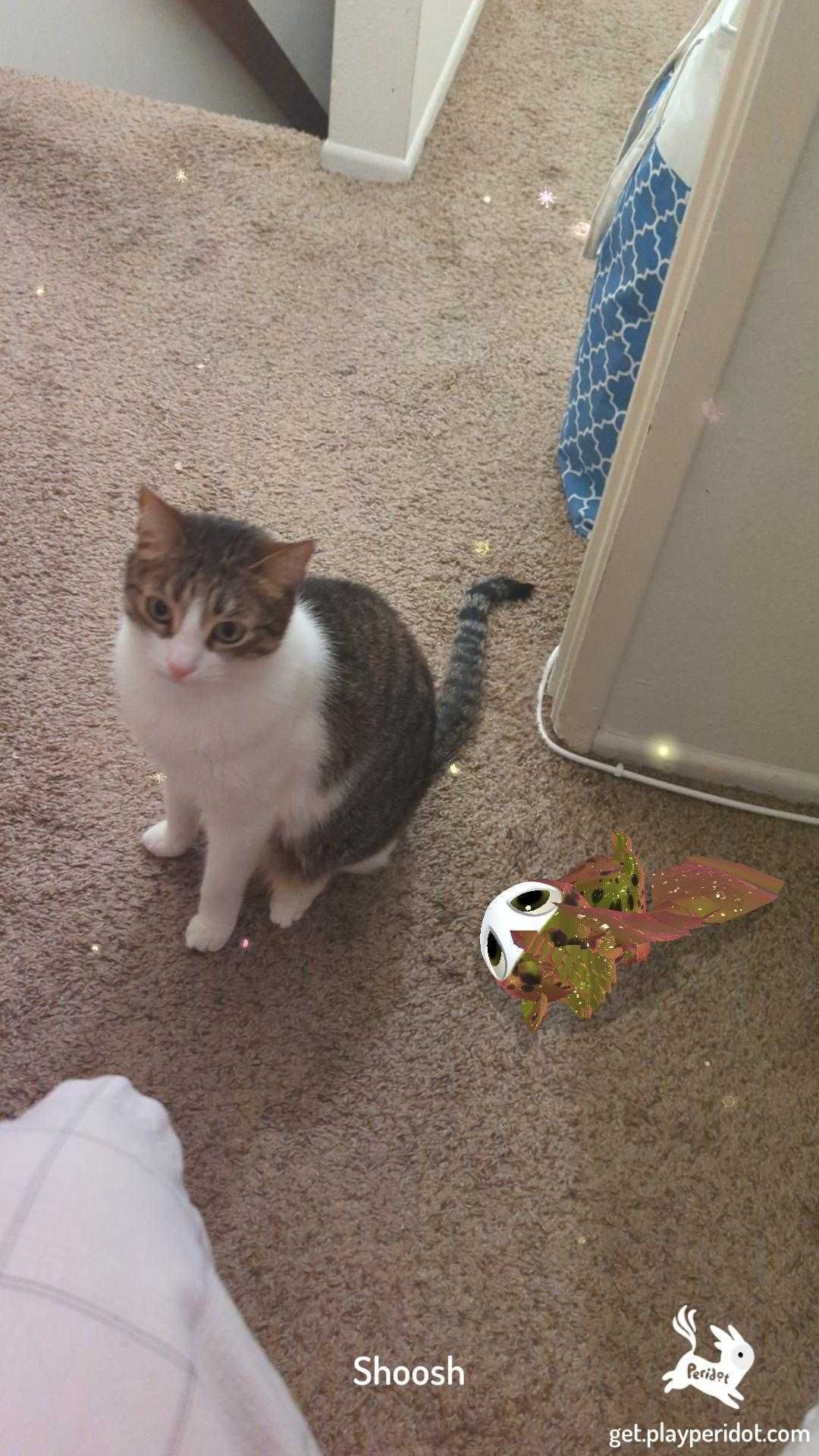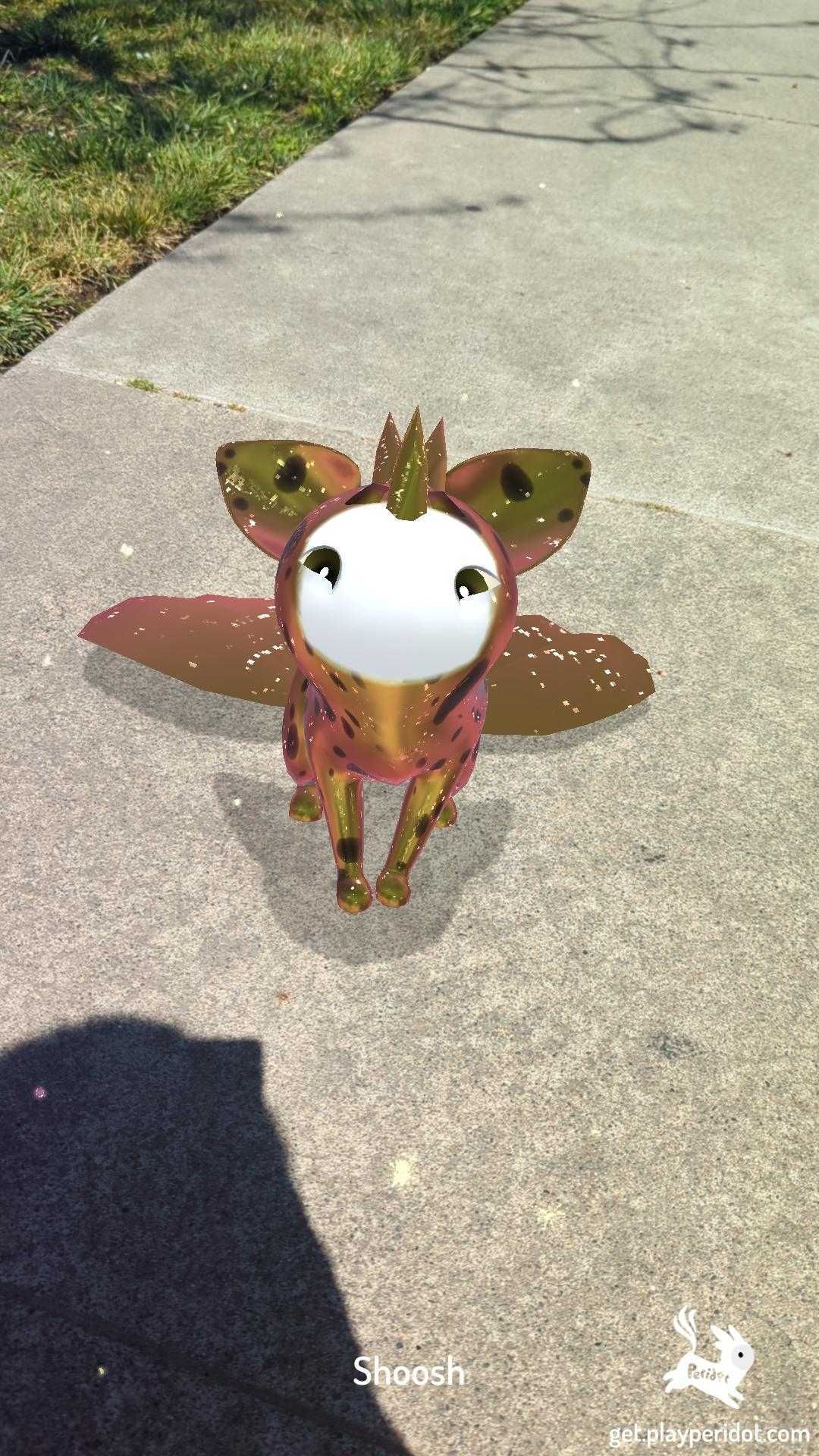Two minutes after launching Peridot, I knew it was something special. The game wastes no time in hatching your first dot, and no sooner had I laid eyes on my adorable little cuddle bug - a sparkly, cheetah-printed creature I named Shoosh - than I started sending pictures of it to all my friends. Peridot’s adorable interactive creatures are the culmination of all of Niantic’s AR work on Pokemon GO, but with a focus on Tamagotchi-style pet maintenance and social media engagement. The built-in photo mode and GIF creator make it incredibly easy to take fun pictures with your dot and share them with the world, so Twitter is already full of free marketing for the game. I could easily see Peridot taking off and becoming a phenomenon this summer, but as it stands the game is a little too confusing, and way too expensive, to be a breakout hit the way Pokemon Go was in 2016.
Niantic has been chasing the success of Pokemon Go for several years now with games like Wizards Unite, Pikmin Bloom, and NBA All-World, but Peridot feels like the biggest departure from its usual formula. It is played entirely in AR, which is as heat-producing and battery-melting as it sounds, but it's designed to be played in short bursts rather than long sessions like Pokemon Go. Much like a Tamagotchi, there isn’t much actual gameplay to Peridot. The experience is more about raising dots and breeding them over time than moment-to-moment engagement. As someone constantly juggling too many live service games as it is, I like the idea of a low-impact pet sim I only have to check on a few times throughout the day.
Those short bursts of gameplay are busy, though. In order to nurture your dot from baby to teenager and eventually adulthood, you’ll need to keep their hunger and boredom meters filled by feeding and playing catch with them. Once those basic needs are met, dots will also have a list of desires to fulfill. These are simple tasks like going for a walk, learning a new trick, or finding a tree to scratch on, to help your dot grow even faster. Once they hit maturity you can start looking for a mate to breed with and start the whole process over, provided you can navigate that complicated process - and you don’t mind throwing down some cash to do it.
Before I get into the complexity of breeding, I have to take a moment to acknowledge just how cool the tech is. Peridot inserts your virtual pet into the real world in a way that makes it feel alive and interactive. Dots run around your house and roll on the floor, they keep up with you when you're walking, and they react to things in the real world like flowers and other pets. Throwing a ball to play catch is a lot like tossing a PokeBall in Pokemon Go, but the ball will actually bounce off the walls and floor with realistic physics. The game can also recognize all kinds of different surfaces, so when you send your dot to forage for food and toys, you’ll get different resources depending on if they’re foraging in dirt, grass, shrubs, concrete, or water. The gameplay may be pretty light right now, but like Pokemon Go, this feels like a game that will grow immensely over the next few years, if it doesn’t burn out all of its players first.
Which brings me to the elephant in the room: the monetization. It takes about three days to grow a dot from a baby to an adult, at which point you’ll want to start looking for another dot to breed with. There’s a nearly infinite number of trait combinations two dots can produce, and the longevity of the game depends on players’ interest in discovering and collecting as many unique trait combinations as possible. Peridot's progression system is a list of unlockable archetypes that represent specific trait combinations. Once you manage to breed a dot with those specific traits, you unlock that archetype in your log. Raising dots is the bread and butter gameplay in Peridot, but breeding them is the real hook.
Breeding is not free, and there’s a convoluted system of overlapping currencies that all feed into the breeding process. You can’t breed without a Nest, and the only way to get Nests is to buy them in the shop for $5. There’s a free Nest promotion right now and some bundle offers, but on average every new dot you hatch is going to cost $5 in real money. There’s no way to earn Nests or find them by foraging. You either pay up, or you can’t participate in breeding.
That’s just the first cost. You will also need to spend Sundrops when you breed, with the amount due based on the distance you are from the dot you’re breeding with. You will earn Sundrops by doing daily and weekly quests, but if you run out because you’re breeding too much, you’ll have to buy more.
New traits unlock as you level up your Keeper Score by completing quests, which means a lot of dots you can breed with have traits that are currently locked for you. As a low level player, I’ve been very frustrated by my breeding options. I’m very limited to the kinds of traits I can get when I breed because all of the cool tails, horns, materials, and patterns are locked behind exceedingly high level requirements. Of course, you can bypass the level requirements by spending gems that you buy from the in-game shop. Keep in mind, there’s no guarantee that the offspring will have any of the traits you want, since the baby will take a random selection from both parents. Peridot’s breeding system is a slot machine. Put in $5 (or more) and hope you get a dot with the traits you’re looking for.
It took me a while to put all that together, because the game does a horrible job of explaining its various currencies and resources. You might expect some intentional obfuscation when it comes to monetization in a mobile game, but Peridot is, on the whole, a surprisingly confusing game. There are resources, currencies, and consumables all throughout Peridot that only vaguely describe what they’re for, if at all, and I’ve spent hours on the Discord server asking veteran players how all of it works, because the game doesn’t tell you. People that have been playing the game for months in beta aren’t even sure how some of the systems work. I started a huge debate the other day about what teaching your dot tricks actually does for you, and almost everyone had a different, conflicting answer.
Breeding is the most confusing of all though. When you’re ready to breed you’ll see a random selection of dots on a few different menus. There’s dots at habitats, Peridot’s version of PokeStops, and Visitor Dots, which I think are just randomly presented to you each day. If you’re looking for specific traits, you’ll have to get involved in the Campfire app, Niantic’s Discord clone that now links to all of its games. There you can post pictures of your dot and look for other dots to breed with. You then have to send a request to that dot's owner, and you can’t breed until they open Campfire, navigate to their message requests, open your message, and accept the breed request. There's no incentive for anyone to do this, which would explain why I have a dozen breed requests out that haven’t been answered for days. I can’t breed until someone accepts my request, so I’ve stopped looking for traits I’m interested in and started just asking everyone, or at least everyone who’s dot has traits that are unlocked at my level. Let me tell you, this process has not made me excited to give Niantic $5 today, let alone every three days when a new dot is ready to breed.
I can forgive it for having unrefined systems at launch. From what I’m told, many of these systems and changes were only introduced in the last few weeks - including having to pay for nests. But the price is killing my interest in the game prematurely. It’s a shame, because Peridot has a lot of people interested in a pet sim, especially those that feel disillusioned by Pokemon Go.
One of my favorite things about Peridot is the way that it doesn’t disadvantage rural players the way Pokemon Go does. The quests involve finding grass, trees, flowers, and doing outdoor activities - things that are a lot easier to do in the country than in a city. Habitats will still be hard to come by if you don’t have many PokeStops around, but the only thing having lots of habitats around does is give you a bigger selection of nearby dots to breed with. If you’re willing to chat up people in Campfire and you have the Sundrops to spend, a rural player can do just as much as an urban player in Peridot.
I’m overwhelmingly charmed by Peridot, despite its shortcomings. I still like to check in on my adult dots, even though there’s nothing left to do with them now but breed, and I love taking pictures of them next to my cats to post on my social media. The charm of Peridot’s cute creatures will bring a lot of curious players in the door, and if Niantic can build out the pet sim features some more they may even stick around. The tech is impressive and it feels like a platform that can grow and grow, but the cost of breeding is a deal breaker for me. I’ll be watching Peridot with much interest, but for now, I won’t be playing it.






